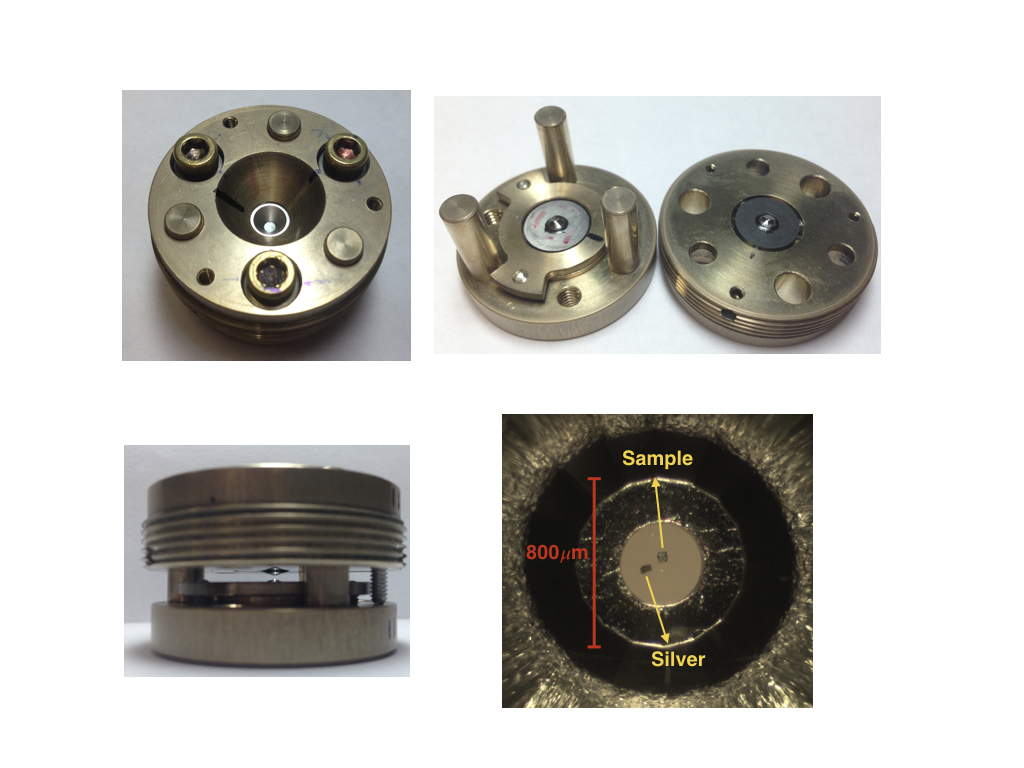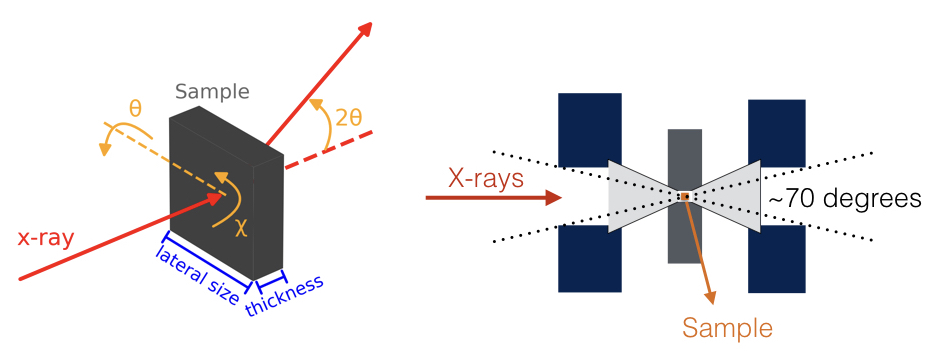|
The high pressure single crystal diffraction setup at 4-ID-D is optimized for measuring weak scattering, such as from magnetic and superlattice Bragg peaks. |
| 4-ID-D Beamline |
|
| Pressure Cell |
|
Designed and machined at University of Chicago.
|
| Sample Size, Pressure Media and Hydrostaticity |
|
The size of the strain acting on a single crystal at high pressure does not solely depend on the hydrostaticity of the pressure media, but also on the ratio between sample and pressure media volumes. X-ray diffraction is highly sensitive to such strain, thus the sample size and pressure media need to be carefully chosen. Information:
Experiments using diamonds with 800 microns diameter (< 15 GPa) For measurements below 10 GPa we recommend using 4:1 methanol:ethanol pressure media and a sample size of ~ 50x50 microns lateral size (see figure below). The thickness is mostly determined by the sample- and energy- specific x-ray transmission, but it typically is ~30-40 microns. Above 10 GPa the hydrostaticity of the 4:1 methanol:ethanol mixture deteriorates, and neon or helium may be preferable. Experiments using diamonds with 500 microns diameter (< 40 GPa) Helium pressure media is recomended for this pressure range. However, the He gas loading process typically reduces the sample chamber diameter to about 120 microns. Therefore we recommend to use samples of ~30x30 microns lateral size, and usually ~20 microns thickness. |
| How can I check if a Bragg peak is accessible? |
|
The pressure cell angular aperture and the sample geometry determines the accessible Bragg peaks. In the usual operational mode, we mantain phi fixed and use theta, two theta and chi to move in reciprocal space (see figure below). In this case, the rules that a Bragg peak needs to obey are:
|


